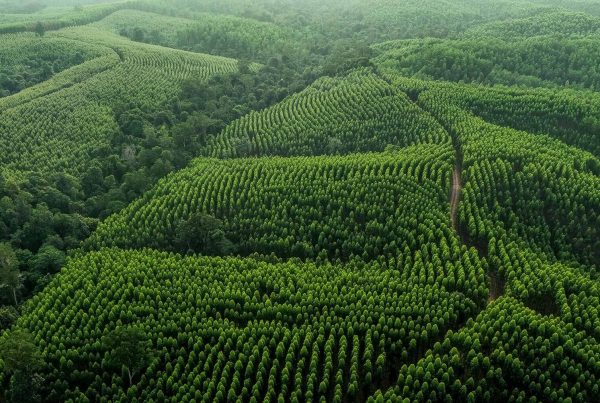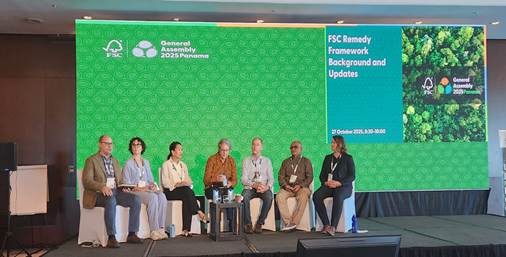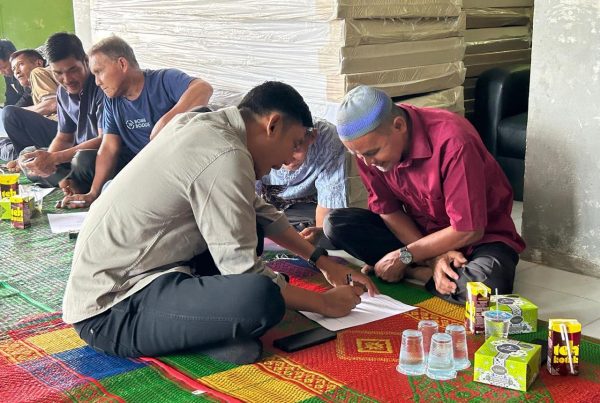Abok Agustinus, the Head of Penyengat Village, who is originally from the Suku Anak Rawa indigenous community in Riau province, Sumatra, shares his views on the FSC remedy process. He hopes the process can be expedited to bring tangible benefits for the people of Penyengat, which has a population of 2,470, especially in terms of economic improvement, education, and long-term support for indigenous communities.
Futong Port, which is located within the administrative area of Penyengat Village, is used by PT Riau Andalan Pulp and Paper (RAPP) to ship pulp, paper, and board products to various international destinations. The company has operated community development programs in the village since 2018, which include support for agricultural production and for local fishermen.
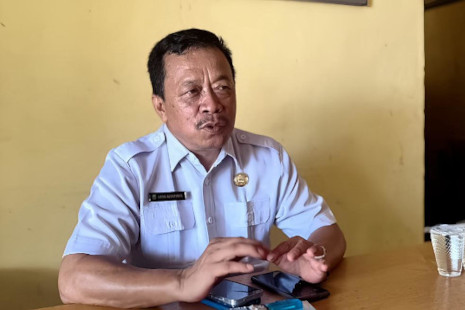
Abok Agustinus, Head of Penyengat Village
Abok has served as Head of Penyengat Village since 2018. Previously, he was Village Secretary from 2004 to 2018. He has attended several forums in the last two years, including the APRIL Stakeholder Forum in Jakarta, the FSC Indonesia Dialogue in Pekanbaru and the District Dialogue in Siak organized by PUG.
What is your opinion about the ongoing FSC remedy process conducted by APRIL Group thus far?
According to the FSC Indonesia representatives we met earlier, the remedy process in all (impacted) villages should be completed before proceeding to the next steps. But, in my opinion, the process does not have to be like that. The FSC can prioritise the process in troubled villages with more concerns, allowing the remedy to be completed more quickly.
If we have to wait for the process to be completed in all villages in the PT. RAPP concession area, it will be a lot to handle. Several meetings have been held with the FSC and I think there are no essential obstacles.
So, in your opinion, how should the implementation of the FSC remedy process in the different villages be prioritized?
In my opinion, if a village is prepared to resolve issues and is ready to negotiate, then it is necessary to pursue it further. We do not have to wait for other villages that are still having problems.
How do you think the FSC remedy process will impact the community?
In my view, the remedy process is about resolving the issues from the past. Its impact is naturally on the community – on how people feel this can be the way for those long-standing problems to finally be addressed properly. It is good for the environment as well, which will result in benefits for the community.
You are from the Suku Anak Rawa community. From your perspective, how can this FSC remedy process bring benefits to indigenous peoples?
For indigenous peoples, the process will benefit us. Therefore, I strongly support the process that has been started. It supports the indigenous peoples and the company in fostering friendship and mutual support.
As the village head, how do the Penyengat communities feel about the FSC remedy process based on what they know of it so far?
We are fully supporting it. Officers from FKKM Riau visited here several times to socialise the process.
Regarding the result of the FSC remedy process, what kind of results do you expect in the future for the Penyengat Village?
First, we hope that previous problems will be resolved. Second, the company should give special attention to the community, especially the indigenous community. That is what we hope for. I don’t know what kind of program should be formulated. Nevertheless, the company needs to give special attention to the assistance program, amongst others, for the community’s economic and educational development assistance.
As for education, the company’s CSR program has already provided scholarships, but we hope the support can be expanded to include more awardees not only at the bachelor’s level but also at the master’s degree level. That is our hope.
Alhamdulillah, we can say that the village’s economy has already improved. The initial improvement came from agriculture, for example, through pineapple plantations. This was first initiated by the PT. RAPP program and has since grown to encompass hundreds of hectares. Previously, perhaps only ten households were responsible for one hectare of plantations. Now it has already expanded to hundreds of hectares.
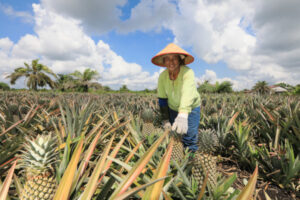
Local pineapple farmer at Penyengat Village’s pineapple plantation
For the next steps of the FSC remedy process going forward, you mentioned earlier that this has already taken quite a long time. Do you have other hopes?
We hope [the process] is fast, responsive. That is all we hope for. Because actually there are no more issues. We have already conveyed all inputs during the previous assistance period. Now we are just waiting for the implementation by FSC, the company, and the community altogether.
We hope the company can convey to FSC, how the remedy process can be faster, more precise, and does not need to take years. Because we have waited for years. If I am not mistaken, I have been following this FSC remedy process for about two years. Because this is a collaborative program between FSC and the company, the loss is primarily the time we will have wasted.
If you have the opportunity to speak directly to FSC, what would you convey to them?
The same. We have already held meetings and conveyed the issues that need to be resolved. The data has already been collected.

